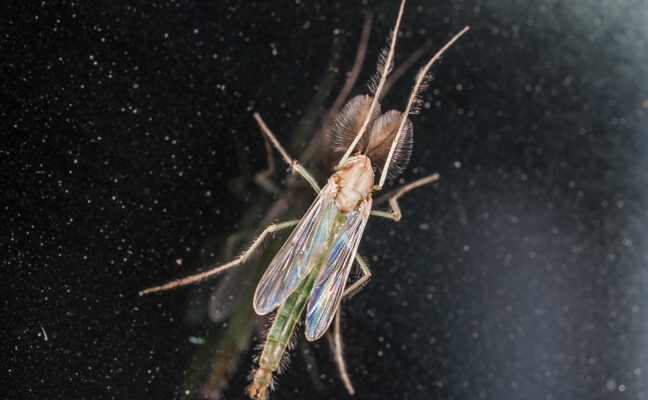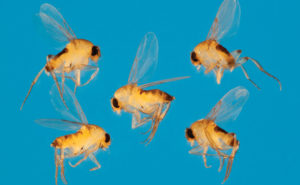Editor’s Note: This is a web exclusive, an addendum to the May print issue’s Ask the Expert column, which can be found here.

A midge adult. PHOTO: SIMAK/ISTOCK / GETTY IMAGES PLUS/GETTY IMAGES
Continuing the conversation asked by “FLYING LITTLE INSECTS ENTERING STRUCTURES,” or “FLIES,” if it’s not fungus gnats, red-eyed fruit flies or moth flies breeding indoors in a residence, it may be a problem that is being bred outdoors and finding their way in.
Midges and such generally don’t try to enter homes — they can be attracted to lights at night and accidentally enter — but they won’t breed inside, so it’s unlikely your customer would see them constantly if they were an occasionally invading fly.
Phoridae are the one family of flies you might be able to identify without a hand lens. They run before they fly, kind of like an airplane on a runway. If you bring your finger close to them, you will see them run away before they take off and fly. This is a dead giveaway that it’s a phorid fly.

Phorid flies. Photo courtesy of, and copyrighted by, Gene White, pmimages@earthlink.net
I haven’t seen phorids as much in residential settings as I have commercial, but they are worth including here. I’ve written a couple of “Ask the Expert” columns that involved phorids in residential settings, both of which were pretty unusual circumstances:
Generally, this family of flies needs a habitat that is wet, although not as wet as moth flies but wetter than fruit flies. Usually, there is a distinct odor of decay associated with their habitat, but not to the level of disgusting like a house fly breeding site. Eliminating the source with possibly some knockdown for any adults that are present is the key to controlling this pest. As with moth flies, some cleaning also will be needed in the affected areas.
The post Midges and phorid flies, oh my! appeared first on Pest Management Professional.
from Pest Management Professional https://www.mypmp.net/2022/05/26/midges-and-phorid-flies-oh-my/
Sacramento CA
No comments:
Post a Comment